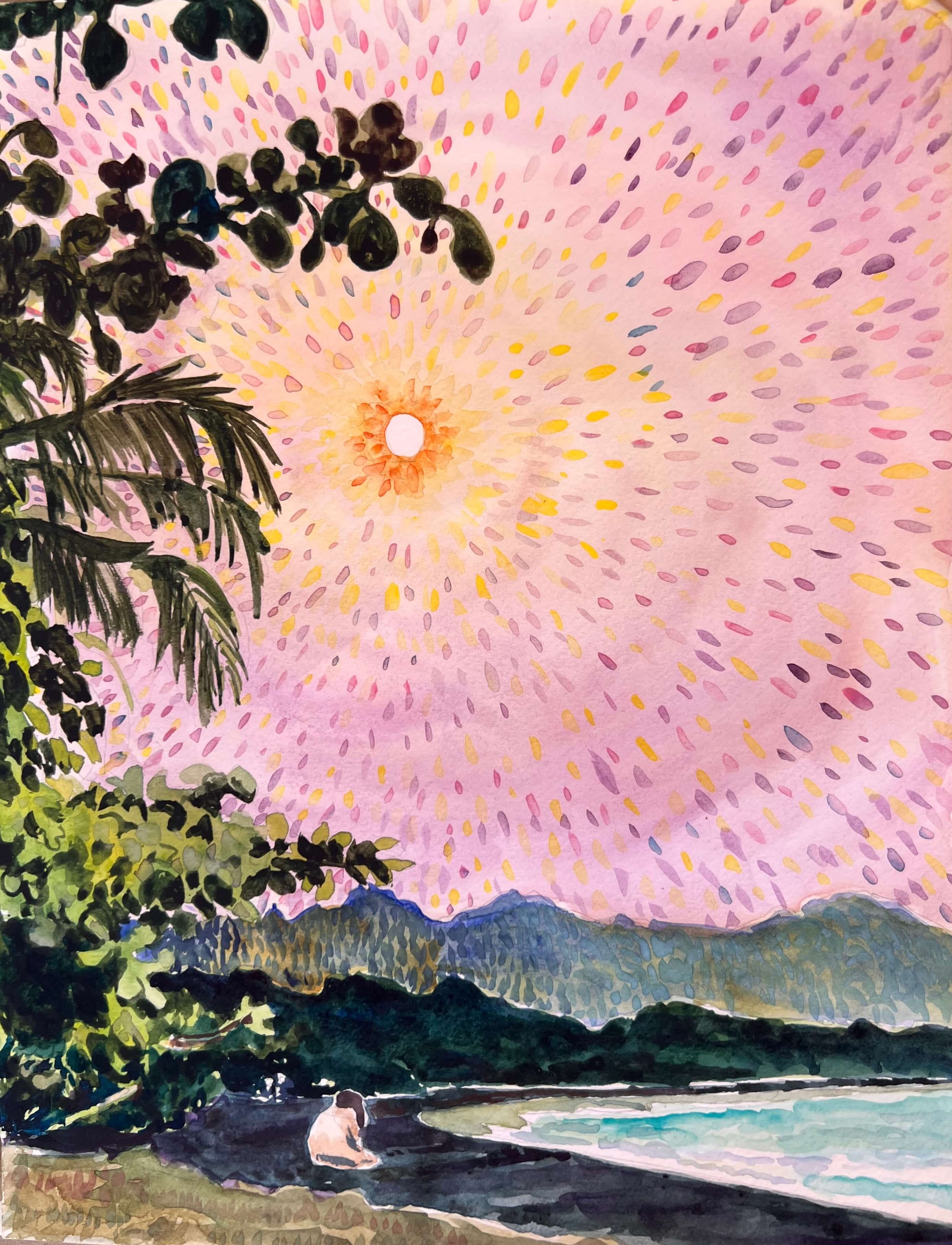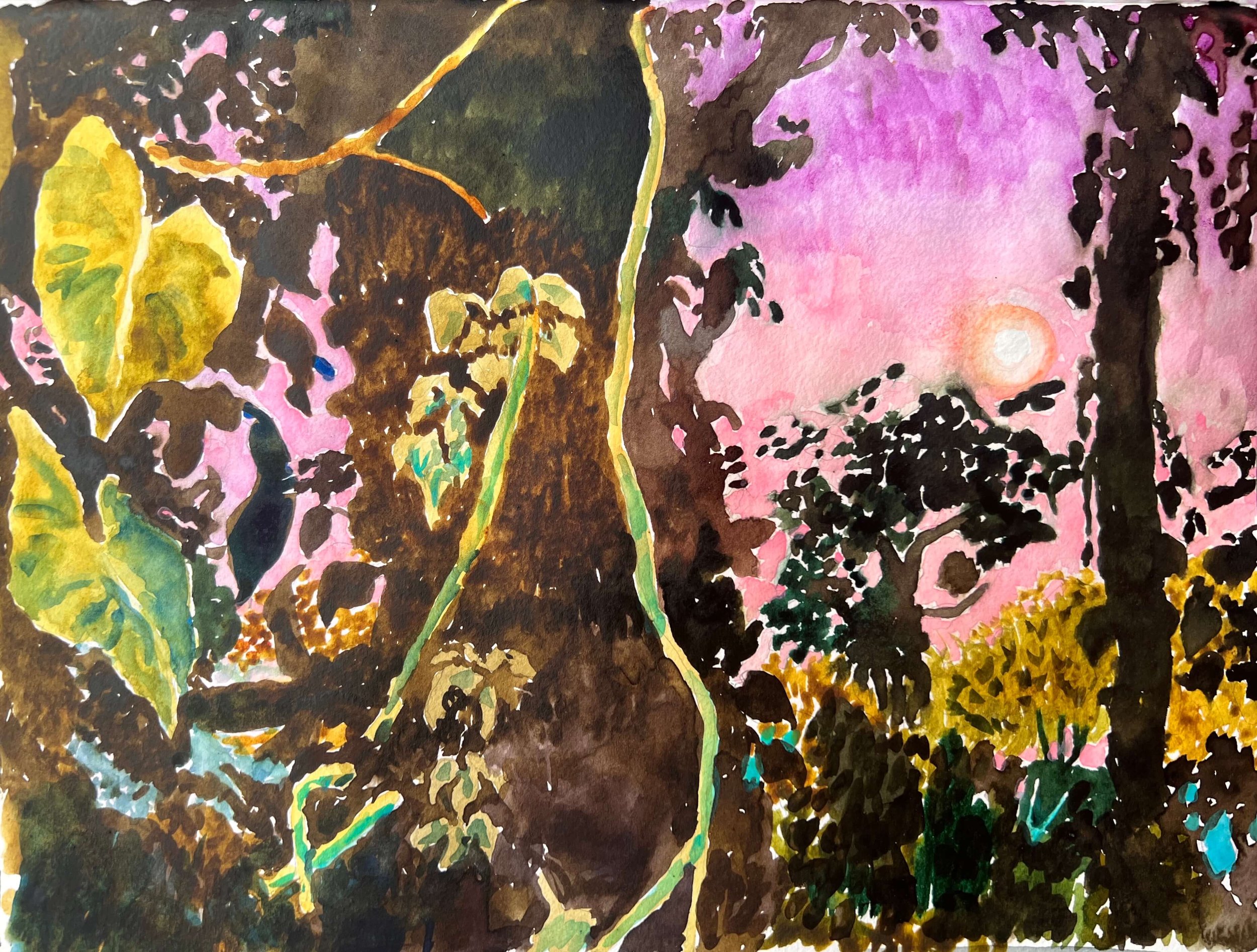Nathaniel Moody
Nathaniel J Moody is a visual artist whose work explores themes of place, memory, and connection. He lives and works on unceded Wabenaki land (so-called Vermont). Born in 1977 to a working-class family in New Hampshire, he developed a passion for drawing at an early age and has pursued a lifelong journey in the arts. Moody earned a BFA from the Art Institute of Boston at Lesley University. He served as a Peace Corps Volunteer in Tanzania, an experience that broadened his perspective on culture, place, and storytelling. His work is evolving as he deepens his exploration of landscapes, history, and personal narrative through painting.
After six years of yurt living, Moody now makes his home on a nonprofit community farm along the West River (Wantastiquet), where he works as a farmer and CSA Coordinator alongside his partner, the farm’s co-director and founder. His creative practice is deeply informed by his surroundings, blending personal history with the landscapes that shape his experience. The cycles of the land, the interplay of labor and renewal, and the act of cultivating a sense of place all echo in his paintings, reinforcing his exploration of belonging and connection.
Artist Statement
My work is a visual travelogue, mapping the landscapes my multiracial family and I have moved through in search of home. Along the way, I have explored themes of grief, loss, and uprootedness; the physical plane running parallel to deep emotional landscapes that shape identity. My paintings exist at the intersection of memory and place, capturing the echoes of history that linger in the land and within us.
I work in both oil and watercolor in a similar way, allowing the transparency of layers to bleed in and out of one another. This process mirrors the way memory surfaces—sometimes sharp, sometimes diffusive, always shaped by time. My paintings are often rooted in photographic reference, yet they move beyond documentation, transforming landscapes into dreamlike spaces imbued with personal and collective histories. Trees, water, and moonlit skies recur as motifs, offering both grounding and a sense of the unknown.
Portals—doorways, pathways, and openings—suggest transition, transformation, and possibility. Figures often appear on the verge of passage, standing before an entrance or moving through a liminal space. These portals act as metaphors for rites of passage, moments of decision, and opportunities for growth. They reflect both the physical movement of my family’s journey and the deeper, internal evolution that comes with searching for home.
My latest body of work follows a deeply personal search for home—not in the sense of returning to the past, but in moving forward. With my wife and children, I have traveled across landscapes that carry both personal significance and historical weight, from the Northeast to the American South and beyond. These journeys reveal shifting relationships to land, belonging, and identity. Some places feel like home, others feel haunted, and many hold the invisible presence of ancestors whose stories were never passed down.
Through this work, I continue to ask: Where did home go? And can it be found again—not in what was lost, but in what we build moving forward?
https://nathanieljmoody.com/home.html











